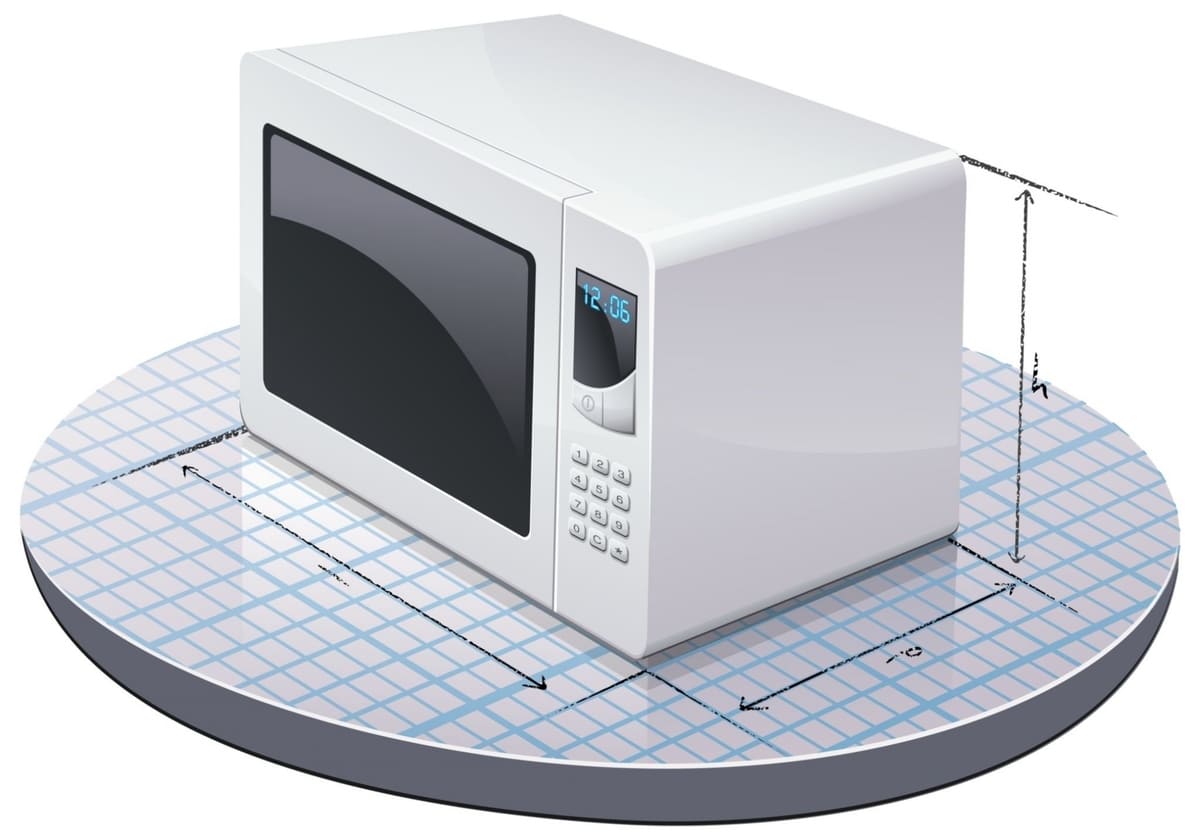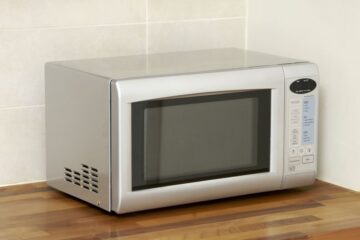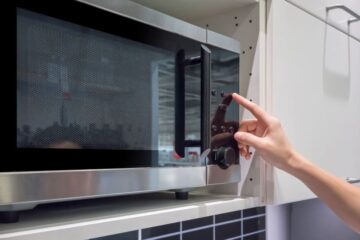Microwave ovens have become an indispensable appliance in modern kitchens. They provide a quick and easy way to cook and reheat food, saving time and effort. However, choosing the right microwave oven can be a daunting task, especially when it comes to understanding the capacity of the oven. In this article, we will explore what cubic feet and liters really mean in microwave oven capacity.
What are Cubic Feet and Liters?
Definition of Cubic Feet and Liters
Cubic feet (ft³) and liters (L) are both units of measurement used to describe the capacity of a microwave oven. Cubic feet is a measurement of volume, whereas liters are a measurement of capacity.
How They are Measured
Microwave ovens are measured in cubic feet or liters, which indicates the amount of space inside the oven. The capacity of a microwave oven is determined by measuring the internal dimensions of the oven – the width, height, and depth – and then multiplying them together. This provides the total cubic feet or liters of the oven.
Differences Between the Two Units
Cubic feet and liters are both used to describe the capacity of a microwave oven, but they are not interchangeable. One cubic foot is equal to approximately 28.3 liters. Therefore, a microwave oven with a capacity of 1.0 cubic feet is equivalent to approximately 28.3 liters.
How Microwave Oven Capacity is Measured?
Standard Measurement Techniques
Microwave oven capacity is measured using standard measurement techniques to ensure accuracy. Manufacturers measure the internal dimensions of the oven and calculate the capacity in cubic feet or liters.
Accuracy of Capacity Measurement
The accuracy of capacity measurement is essential in ensuring that the microwave oven can accommodate the desired cooking needs. Therefore, it is crucial to follow the manufacturer’s instructions when measuring the capacity of the oven.
Factors Affecting Microwave Oven Capacity
Shape and Size of the Oven
The shape and size of the microwave oven can affect the capacity. Microwaves with a rectangular shape tend to have more usable space than those with a round shape. Additionally, the height of the oven can affect the capacity, with taller ovens providing more space for larger items.
Type of Microwave Oven
The type of microwave oven can also affect the capacity. Countertop microwave ovens typically have smaller capacities, while over-the-range and built-in microwave ovens tend to have larger capacities.
Additional Features
Additional features, such as turntables and racks, can also affect the capacity of the microwave oven. These features can take up space inside the oven, reducing the usable space.
Advantages of a Large Capacity Microwave Oven
Convenience
A larger capacity microwave oven can provide convenience by allowing you to cook larger meals and reheat multiple dishes at once. This can save time and effort, especially for larger families.
Cooking Versatility
A larger capacity microwave oven can also provide more cooking versatility. With more space, you can cook a wider variety of dishes, including larger items such as whole chickens or roasts.
Energy Efficiency
Contrary to popular belief, a larger capacity microwave oven can be more energy-efficient than a smaller one. This is because larger microwaves have more powerful motors, which can cook food faster and more efficiently.
Disadvantages of a Large Capacity Microwave Oven
Cost
A larger capacity microwave oven typically costs more than a smaller one. This is because larger microwaves require more materials to manufacture and may have additional features, such as turntables or racks.
Space Requirements
A larger capacity microwave oven requires more space in the kitchen. This can be a disadvantage for smaller kitchens or those with limited counter space.
Maintenance
Larger microwave ovens may require more maintenance than smaller ones. This is because they have more parts and may be more complex. For example, a larger microwave may have a turntable or multiple racks that need to be cleaned regularly. Additionally, if a larger microwave breaks down, it may be more expensive to repair than a smaller one.
Advantages of a Small Capacity Microwave Oven
Cost-effectiveness
One of the biggest advantages of a small capacity microwave oven is its cost-effectiveness. Small microwaves are generally less expensive than larger ones. This is because they require fewer materials to manufacture and may have fewer features.
Space-saving
A small capacity microwave oven is ideal for those who have limited counter space in their kitchen. These microwaves are usually compact and can easily fit in small kitchens or on crowded countertops.
Energy efficiency
A small capacity microwave oven requires less energy to operate than a larger one. This is because it has a smaller cooking space and uses less power to heat up food. If you’re looking to save money on your energy bill, a small capacity microwave oven may be a good choice for you.
Disadvantages of a Small Capacity Microwave Oven
Limited cooking options
A small capacity microwave oven may not have as many cooking options as a larger one. This is because it has a smaller cooking space and may not be able to accommodate larger dishes. If you’re someone who likes to cook a variety of meals in your microwave, a small capacity oven may not be the best choice for you.
Inconvenience for larger families
A small capacity microwave oven may be inconvenient for larger families. If you have a large family or frequently entertain guests, you may find yourself having to cook food in multiple batches, which can be time-consuming and inconvenient.
Higher cooking time
Because a small capacity microwave oven has a smaller cooking space, it may take longer to cook food than a larger one. This is because the microwave may need to be run for multiple cycles to heat up a large dish. If you’re someone who is short on time or frequently cooks large meals, a small capacity oven may not be the best choice for you.
How to Determine the Right Microwave Oven Capacity for You?
Consider your cooking needs
When choosing a microwave oven, it’s important to consider your cooking needs. If you frequently cook large meals or have a large family, you may want to choose a larger capacity microwave oven. If you only use your microwave for reheating leftovers or cooking small meals, a smaller capacity oven may be a better choice for you.
Consider your kitchen space
It’s also important to consider the amount of space you have in your kitchen. If you have a small kitchen or limited counter space, a smaller capacity microwave oven may be the best choice for you. If you have a larger kitchen or more counter space, you may be able to accommodate a larger capacity microwave oven.
Consider your budget
Finally, you’ll want to consider your budget when choosing a microwave oven. Larger capacity microwaves tend to be more expensive than smaller ones. If you’re on a tight budget, a smaller capacity microwave oven may be the best choice for you.
Recommended Microwave Oven Capacities
Single person household
If you live alone and only use your microwave for reheating leftovers or cooking small meals, a microwave with a capacity of 0.5-0.9 cubic feet or 14-26 liters may be sufficient for your needs.
Small families
If you have a small family or only cook small meals, a microwave with a capacity of 1.0-1.5 cubic feet or 28-42 liters may be a good choice for you.
Large families
If you have a large family or frequently cook large meals, a microwave with a capacity of 1.6-2.0 cubic feet or 45-56 liters would be the best option. This size can accommodate larger dishes and can be used for more advanced cooking techniques, such as defrosting a large turkey or cooking a whole chicken. Additionally, some larger capacity microwaves come with multiple racks or shelves, allowing you to cook multiple dishes at once.
Commercial use
For commercial use, such as in a restaurant or cafe, a microwave with a capacity of 2.0 cubic feet or more is recommended. These microwaves are designed to withstand heavy use and can handle larger quantities of food at once.
What to Look for When Choosing a Microwave Oven Based on Capacity?
When choosing a microwave oven based on capacity, there are a few factors to consider:
- Type of Microwave Oven: There are three types of microwave ovens: countertop, built-in, and over-the-range. Countertop models are the most common and are available in a variety of sizes. Built-in models are designed to be installed in a cabinet or wall and typically have larger capacities. Over-the-range models are mounted above the stove and are designed to save space.
- Additional Features: Some microwave ovens come with additional features, such as convection cooking or grilling. These features may affect the capacity of the oven, so it’s important to consider them when choosing a microwave based on capacity.
- Size and Shape of the Oven: The size and shape of the oven can also affect its capacity. Ovens with larger turntables or those that can accommodate larger dishes may have larger capacities.
Common Microwave Oven Capacities in Cubic Feet and Liters
Microwave ovens are available in a range of capacities. Here are some common sizes and their equivalents in cubic feet and liters:
- Small microwave ovens (0.5-0.9 cubic feet or 14-26 liters)
- Medium microwave ovens (1.0-1.5 cubic feet or 28-42 liters)
- Large microwave ovens (1.6-2.0 cubic feet or 45-56 liters)
- Extra-large microwave ovens (2.1 cubic feet or 59 liters and above)
Conversion of Cubic Feet to Liters
If you need to convert the capacity of a microwave oven from cubic feet to liters (or vice versa), here’s how to do it:
Definition of Conversion:
One cubic foot is equal to 28.32 liters.
How to Convert Cubic Feet to Liters:
To convert cubic feet to liters, multiply the number of cubic feet by 28.32. For example, a microwave oven with a capacity of 1.0 cubic feet would be equivalent to 28.32 liters (1.0 x 28.32 = 28.32).
Examples of Conversion:
- A microwave oven with a capacity of 0.9 cubic feet is equivalent to 25.51 liters (0.9 x 28.32 = 25.51).
- A microwave oven with a capacity of 2.2 cubic feet is equivalent to 62.48 liters (2.2 x 28.32 = 62.48).
Common Misconceptions About Microwave Oven Capacity
There are several misconceptions about microwave oven capacity that should be cleared up:
- Bigger is Always Better: While a larger microwave oven may have more capacity, it may not be the best choice for your needs. It’s important to consider your specific cooking needs and the space available in your kitchen when choosing a microwave oven.
- Capacity Doesn’t Affect Cooking Time: The capacity of a microwave oven can affect cooking time. Larger dishes or more food in the oven may require longer cooking times to ensure that all parts of the dish are cooked evenly.
- Small Microwaves Can’t Cook Large Meals: While a smaller microwave oven may have less capacity, it can still be used to cook larger meals by cooking them in batches or using smaller cookware. It may take longer to cook a large meal in a smaller microwave, but it is still possible.
Conclusion
In conclusion, choosing the right microwave oven capacity depends on your specific needs and usage habits. Whether you’re a single person household, a small family, or a large family, there is a microwave oven with the right capacity for you. Remember to consider the type of microwave oven, additional features, and the size and shape of the oven when making your decision. Don’t be fooled by common misconceptions about microwave oven capacity, such as the idea that bigger is always better or that capacity doesn’t affect cooking time. By understanding the common microwave oven capacities and how to convert cubic feet to liters, you can make an informed decision when choosing the right microwave oven for your kitchen.




